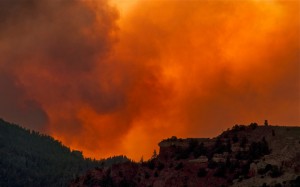
Climate Change causing 400,000 deaths per year
The costs of climate change are often perceived to be abstract – the costs borne by someone else, and likely far off in the future. However, a recent report details the real costs of climate change, which is already underway. Droughts, floods, fires, extreme weather, desertification, loss of biodiversity, sea-level rise, water scarcity, and declining fishery and agricultural productivity are just some of the consequences of climate change.
Climate change is currently costing the global economy $1.2 trillion per year, equivalent to about 1.6% of global GDP. That estimate comes from a report released by DARA, a humanitarian group, and the Climate Vulnerable Forum.
The human cost is also huge. An estimated 400,000 people die each year due to hunger and diseases related to climate change. By 2030, the death toll is expected to rise to 700,000 per year, and cost the global economy 2.5% of GDP annually.
Moreover, in addition to climate change, the current pollution-intensive energy system exacts further damage: 4.5 million annual deaths due to air pollution, indoor smoke, occupational hazards and cancer.
Despite the fact that costs are global, the overwhelming burden falls on countries least able to withstand the onslaught. Over 90% of the casualties related to climate change are suffered by developing countries. That is because adaptation to climate change requires resources and investment.
While the developed world may avoid the worst effects of climate change, destabilization around the world will present national security threats to the United States. Mass migration, political instability, and conflict over resources will be hard to ignore. If history is any guide, these events will sap U.S. resources, and possibly even lead to military involvement.
Also, just because the developing world will be hit harder, that does not mean that the U.S. won’t face domestic threats from climate change as well. Increasing severity of storms will exact a larger economic bill for emergency response and reconstruction. Agricultural production will be damaged. Floods, drought and disease will continue to increase in frequency and severity.
Critics of policies to address climate change often cite the high cost of mitigation and adaptation. However, there are also costs of doing nothing (i.e. 1.6% of global GDP each year!). The costs of doing nothing will continue to rise the more we put off action.







[…] magnitude of the crisis facing humankind cannot be overstated. More than 400,000 people are dying each year, and, a confidential report from the United Nations said that three years ago […]
[…] magnitude of the crisis facing humankind cannot be overstated. More than 400,000 people are dying each year, and, a confidential report from the United Nations said that three years ago […]
[…] The poor, the young and the elderly are already the first victims of climate injustice, with 400,000 a year dying from disease and hunger induced by climate […]